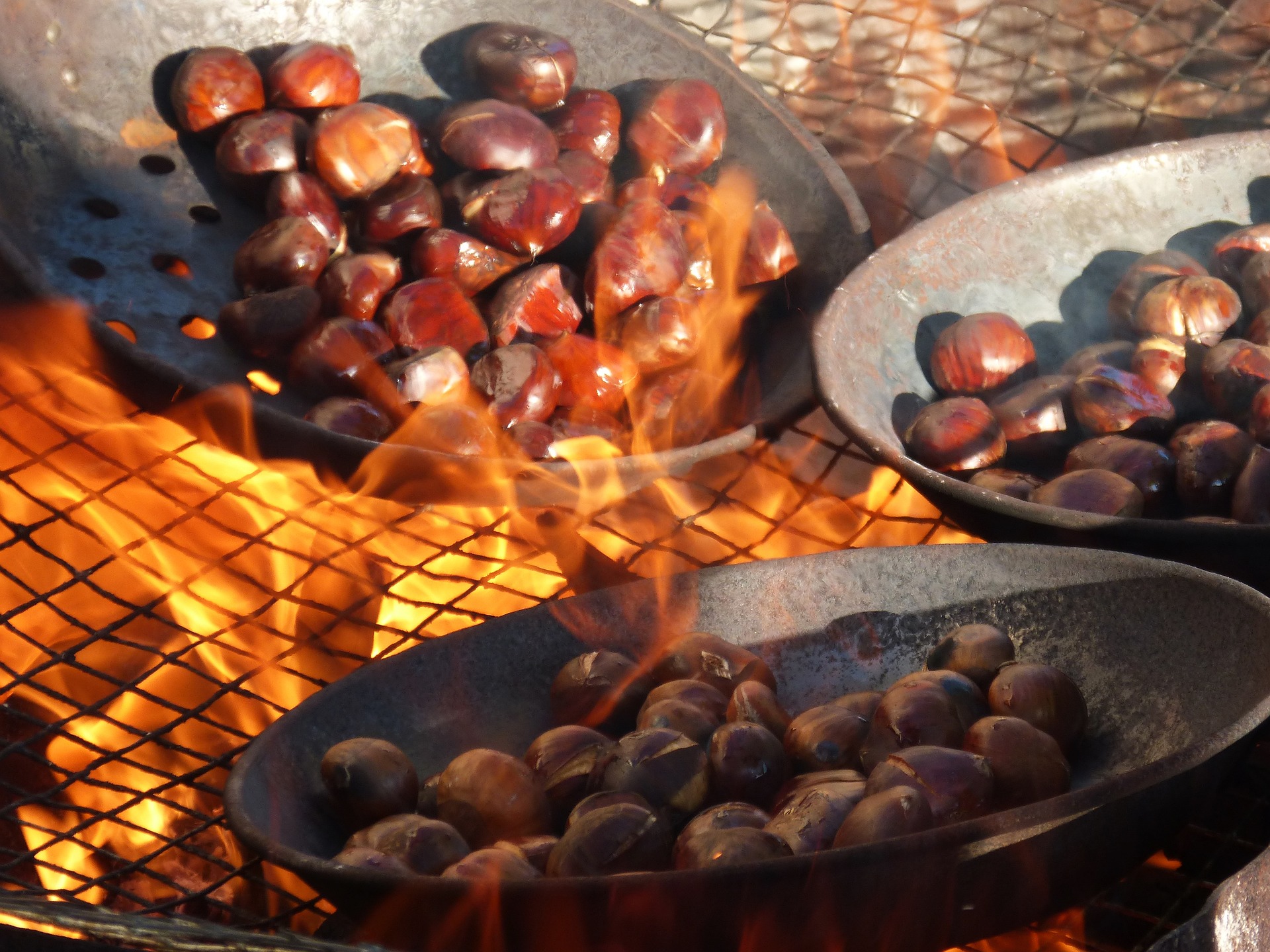Can You Freeze Chestnuts: Methods to Freeze Chestnuts
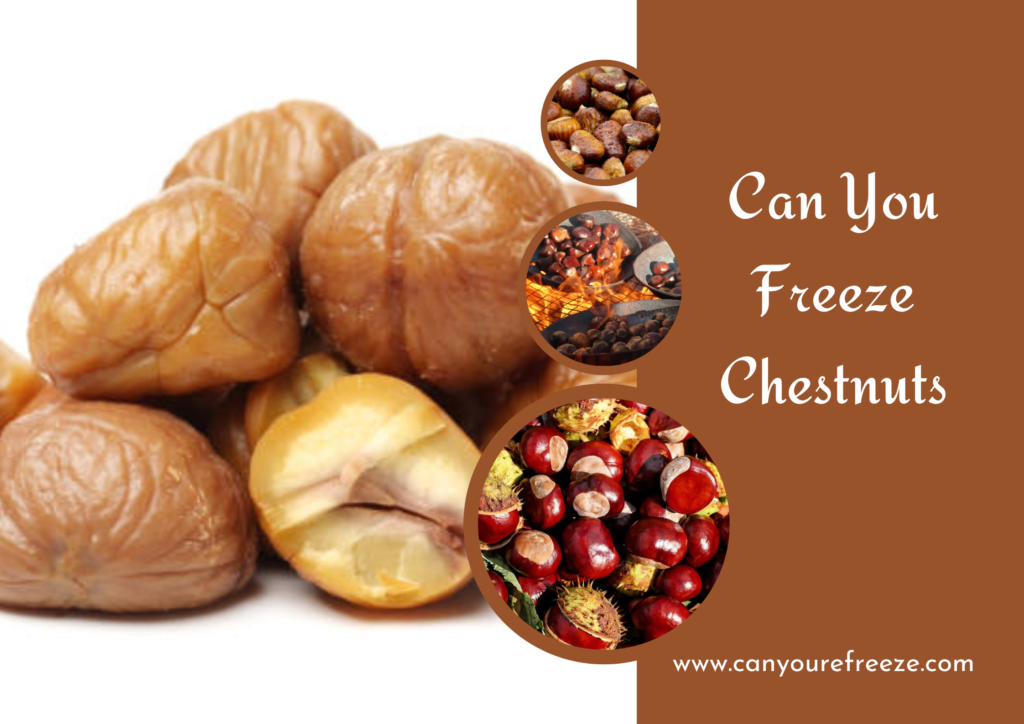
Similar to other nuts, chestnuts act as a perfect snack for those midnight or midday cravings. Speaking of fact they have the same level of carbs as wheat and are nutritious. If you wish to know ways to freeze chestnuts in their raw form or stuffing form, keep reading till the end!
Gallic acid and Ellagic acid are the two most useful forms of antioxidants for the human body. Fortunately, you can find them in rich amounts in chestnuts. These agents keep heart diseases at bay and prevent you from any kind of muscular ailments.
Chestnuts are eaten in many forms- raw, cooked, baked, pureed, stuffed, etc. The number of food items that you can prepare with chestnuts is crazy! So, it’s best if you can stock and store chestnuts for a long time in your freezer. Let us know how to freeze chestnuts for a long time in different forms in the following sections of this article.
How to Freeze Chestnuts for a Long Time?

So here is everything you need to know about how to freeze chestnuts. Well, you will be able to freeze chestnuts in the freezer for a good long time of six to eight months. Thus, follow these steps effectively for freezing chestnuts. First of all, start by prepping your chestnuts for freezing them. Here are the steps you need to follow for prepping the chestnuts.
Steps to Prep for Before you Freeze Chestnuts
1. Pick Mature Chestnuts and Clean them: Always pick mature chestnuts over raw ones for freezing. Because if you freeze raw chestnuts they might taste bland and won’t give the original flavors. Once you pick your chestnuts wash them with cold water.
2. Slit Chestnuts: Take a clean knife or fork and create a tiny slit on any side of the chestnuts. Do not pierce the chestnut all the way, just prick it with little force so that you see a slit on it. Once you slit the nut, try to press it gently so that you see the slit with your naked eyes.
3. Boil Chestnuts: Now transfer the pricked chestnuts to a pan and add clean water to it. Let the nuts sit for two hours and then boil them for two minutes. Then remove these nuts and toss them into a hot dry pan for roasting.
4. Roasting: Continue to roast the chestnuts for a minute or so till they get dark brown and they are free from moisture.
5. Remove the Peels: At this stage, the peels of thoroughly roasted chestnuts will start to fall automatically. Remove all the peels from the chestnuts and you are done.
Methods to Freeze Chestnuts | Can you freeze vacuum packed chestnuts?
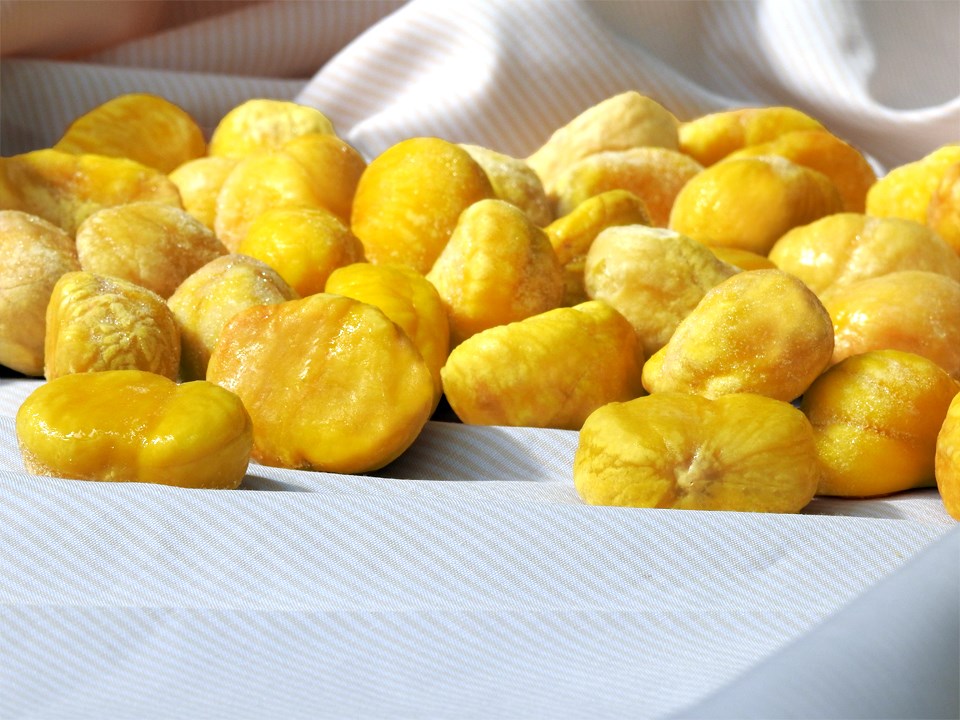
Now, you have freshly washed, pricked, boiled, and roasted chestnuts that are perfect for freezing. So, start by lining a baking sheet or tray with a layer of parchment or baking paper. Now, evenly spread the roasted chestnuts on this tray without crowding them too much.
Freeze chestnuts on the tray for a minimum duration of three hours. You can also cover them in cling film during flash freezing so that they freeze well without any bacterial contamination. Then, shift the frozen chestnuts to a freezer bag or a container. Oh! we will talk about a good quality freezer-safe bag a little later in this post!
Now remove all the excess air from the bags before freezing them. Also, do add labels to these bags so that you can check them later. Freeze these bags and use them accordingly. If you follow the preparation tips for chestnuts then you can freeze them pretty effectively.
However, if you wish to reduce your time and energy on prepping up your chestnuts then you can directly buy vacuum-pressed nuts. You can store the entire sealed box of vacuum-pressed nuts in the freezer for six months.
How to defrost frozen chestnuts?
Well, now that your know how to freeze chestnuts, let us now learn about how to defrost frozen chestnuts as well!
The nuts will often cook together with the other ingredients in most recipes, but if the cooking time is shorter, they can be boiled in stock or roasted with a butter-and-oil mixture to give them a deliciously crunchy texture.
In that scenario, let frozen chestnuts thaw overnight in the refrigerator. Bring them to room temperature. They can also be roasted for 15-20 minutes in an oven that has been preheated to 400 degrees F or boiled for 10-15 minutes in water. Before you finish cooking, test a chestnut because the amount of time it takes to cook depends on its size and age.
Can you freeze peeled chestnuts?
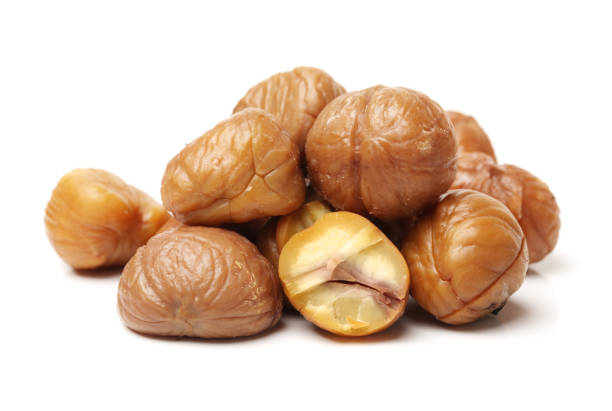
Freezing peeled chestnuts has its own set of benefits and despite the fact that you can place unprepared chestnuts with their peels in the freezer, there is simply no benefit. Instead, start with the preparations so that you may store frozen chestnuts that are ready to use in the recipes. Once the prep is all done using the steps mentioned in the section above, follow these steps:
- Place the peeled chestnuts on a towel and peel while still hot. To prevent burns to your hands, put on heat-resistant gloves.
- Spread the peeled chestnuts out on a baking sheet that can be put in the freezer, spacing them about a centimeter apart, and keep the chestnuts frozen for a few hours.
- Put the chestnuts in a freezer-safe bag or container once they are frozen solid. A bag will function better in this situation since you can get rid of the extra air and a bag will take up less room.
- Tightly close the bag, trying to press out as much extra air as you can.
- Don’t forget to date and label the bag before freezing it.
Well, knowing how to freeze peeled chestnuts is a thing and freezing chestnuts in a puree or stuffing form is a lot easier game altogether. Read on to know how to do it!
Can You Freeze Chestnuts Puree/ Stuffings?
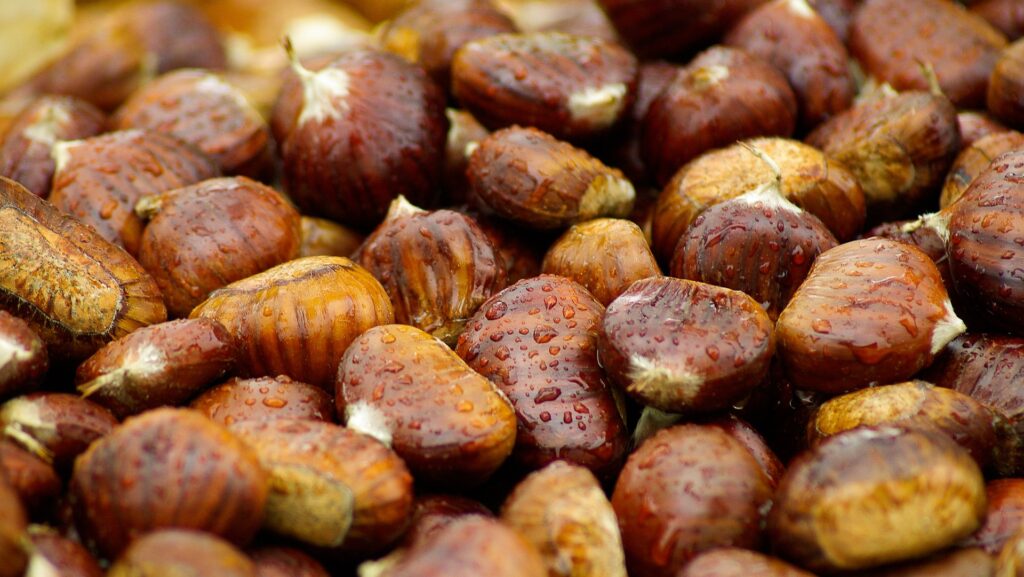
Yes, this versatile nutty puree of chestnuts can be frozen in the freezer! What’s even better is that your chestnut puree will last in the freezer for three months straight. Therefore, if you prepare chestnut stuffings or puree in October then they can be used in December effectively!
So, start preparing basic side dishes like chestnut puree from October and use them on Christmas Eve! You can store chestnut puree or stuffings in fresh airtight bags or freezer-safe boxes. Shift the fresh puree into the boxes and drop them in the freezer with labels on them.
When you feel the need to use the frozen puree, you can thaw it in the fridge overnight. However, if you are thawing the entire batch then you must use it within three to four days at the most. Therefore, it will be better if you freeze the chestnut puree in small ziplock bags or containers. This way you can thaw the required amount at any time. Also, freezing chestnut flour is the easiest thing one can ever do for stocking chestnuts for later use. Let us now see how to freeze chestnut flour.
How to Freeze Chestnuts Flour?
Freezing chestnut flour is a very simple process. Start by preparing chestnut flour as per your recipe. Before freezing the flour, take a sieve and sift the flour at least two times to get an even texture of the flour.
Then, take a clean airtight bag and start filling it with flour using a spatula. Do not use wet bags or a spatula or else the flour will clump together. Shift these bags to the freezer and use them within eight months.
Chestnut flour is a staple substitute for wheat flour and gives a nice texture to many recipes. So, if you don’t have wheat flour or don’t like the flavors of wheat flour, replace it with chestnut flour. You may freeze leftover chestnut flour using this method as well.
Do chestnuts freeze well? | Tips for Freezing Chestnuts
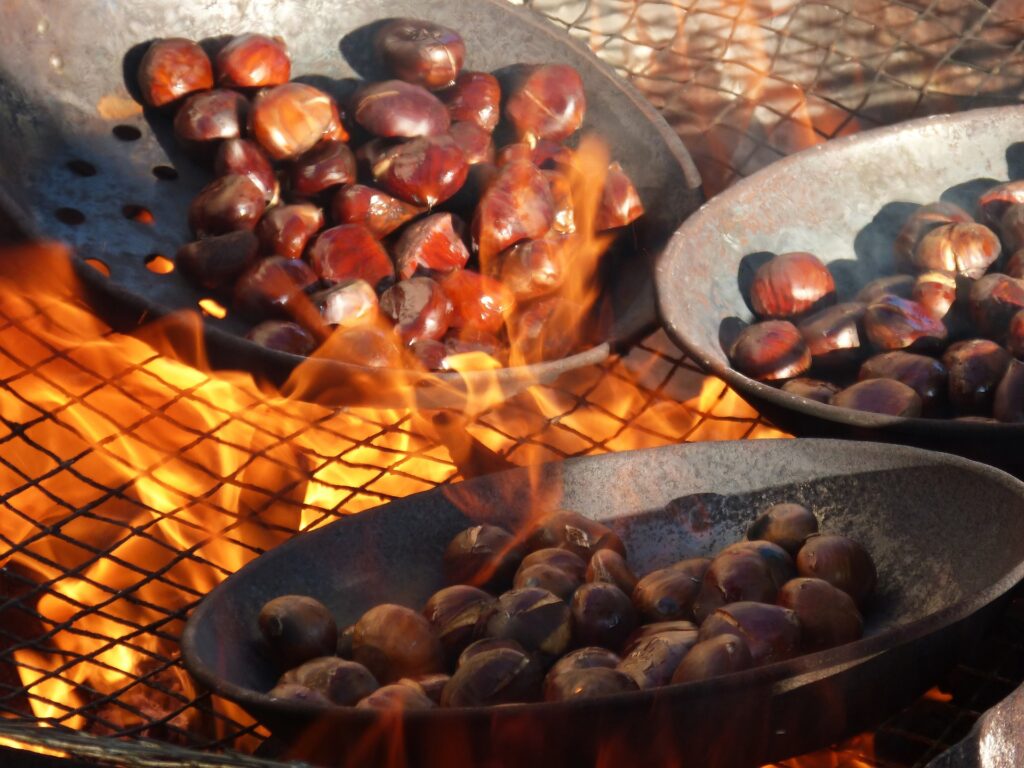
After gaining knowledge about ways to freeze chestnuts in different forms, now you must take note of these essential tips as well!
1. The only reason why we wish to freeze food is to save our time for future cooking. To aid in this process, you must take necessary measures before freezing the food item. So, when you are freezing chestnuts, always discard their peels before freezing so that you don’t have to face a mess later on.
2. Although you can freeze roasted chestnuts pretty well, it isn’t something we would recommend doing. Especially, if you want fresh flavors to relish, then try to roast chestnuts after you remove them from the freezer.
3. If you have an extra batch of frozen chestnuts then you can use them directly for preparing stuffings or fillings. There’s no need to thaw freshly frozen chestnuts before using them, which makes them a desirable item to store in the freezer.
Chestnuts are an active source of many nutritional elements. Thus, if you freeze chestnuts, you are saving up a tasty and healthy meal for your future self. Noticing the ease of freezing and the length of storage, chestnuts perform extremely well in the freezer.
Quality Freezer-Safe Bag
The most important tips for freezing chestnuts include using a good quality freezer-safe bag. Beware that they will not keep more than a few days in the freezer if the freezer bag or the container is of bad quality.
Regular zip-top bags and freezer bags are both manufactured using strong plastic, come in the same sizes, and frequently have the same kind of seal. One thing that distinguishes them is their thickness.
Therefore, when it comes to preserving food in the freezer, freezer bags are stronger and more lasting since they are thicker than conventional zip-top bags.

